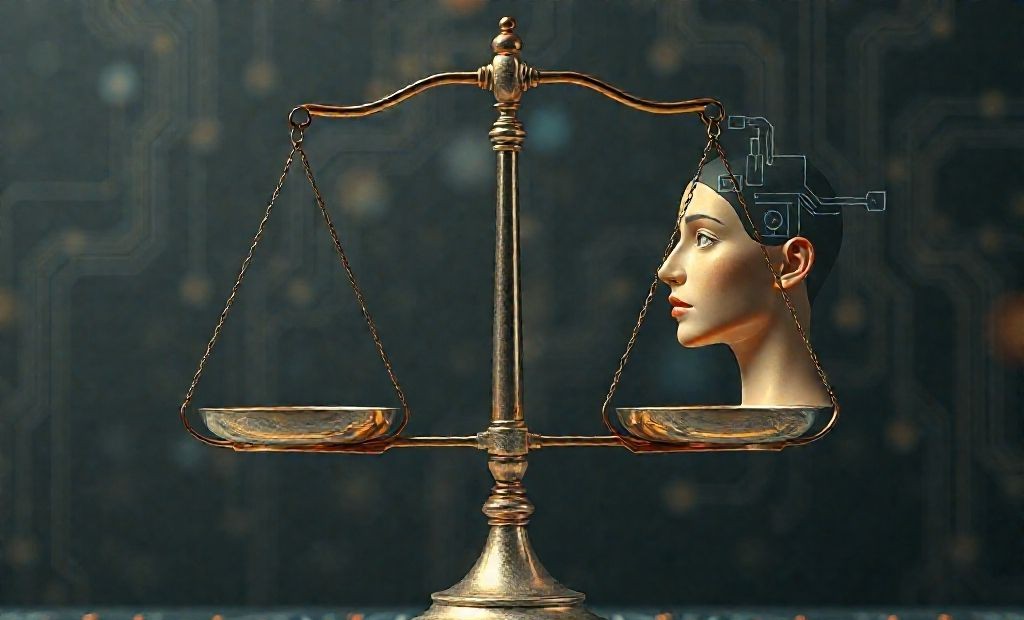AI Ethics Navigating Bias and Ensuring Fairness

AI Ethics Navigating Bias and Ensuring Fairness Artificial intelligence is rapidly transforming our world But with great power comes great responsibility. As AI systems become...
⏱️ Estimated reading time: 3 min
Latest News
AI Ethics Navigating Bias and Ensuring Fairness
Artificial intelligence is rapidly transforming our world But with great power comes great responsibility. As AI systems become more integrated into our lives its crucial to address the ethical implications and ensure fairness across all applications.
Understanding AI Bias
AI bias occurs when algorithms produce results that are systematically prejudiced due to flawed assumptions in the machine learning process or from the data used to train the model. This can lead to discriminatory outcomes affecting various demographic groups.
Sources of Bias
- Data Bias: The training data does not accurately represent the population.
- Algorithmic Bias: Flaws in the design of the AI algorithm lead to unfair outcomes.
- Human Bias: Preconceived notions of the data scientists or engineers influence the models.
Techniques for Mitigating Bias
Fortunately there are many techniques we can employ to reduce bias in AI systems:
- Data Augmentation: Increasing the diversity of the training dataset. This could mean sampling more diverse data or using techniques to artificially generate more samples from underrepresented groups.
- Bias Detection Tools: Using tools to identify and quantify bias within datasets and models. Examples include fairness metrics libraries available in Python.
- Algorithmic Fairness Constraints: Modifying algorithms to incorporate fairness constraints which force the model to perform similarly across different demographic groups.
- Explainable AI (XAI): Using techniques to understand how AI models make decisions allowing for the identification of bias influencing factors.
Implementing Ethical AI Development
Creating ethical AI systems requires more than just technical solutions It demands a holistic approach incorporating ethical considerations into every stage of the development lifecycle.
Best Practices
- Define Clear Ethical Guidelines: Establish clear principles guiding the design and deployment of AI systems.
- Cross-Functional Collaboration: Involve ethicists sociologists and domain experts in AI projects.
- Transparency and Explainability: Design AI systems that are transparent and provide explanations for their decisions.
- Regular Audits and Monitoring: Continuously monitor AI systems for bias and unfair outcomes.
Advanced Uses of AI in Ethics
AI itself can be used to solve ethical problems for example:
- Automated Bias Detection: Develop AI to automatically analyze datasets for hidden biases.
- Fairness-Aware AI Training: AI can be employed to automatically adjust the training data to mitigate bias.
- Ethical Decision Support: Use AI to help humans make better ethical decisions by providing relevant data and insights.
Final Words on AI Ethics
As AI continues to evolve it’s imperative to prioritize ethics and fairness By understanding the sources of bias implementing mitigation techniques and adopting a holistic approach to AI development we can ensure that AI benefits all of humanity and avoids perpetuating societal inequalities.
Related Posts

Tim Chen The Sought-After Solo Investor
Tim Chen A Quiet Force in Solo Investing Tim Chen has emerged as one of...
September 23, 2025

Tide Achieves Unicorn Status with India’s SMB Support
UK Fintech Tide Becomes Unicorn with TPG’s Backing UK-based fintech company, Tide, has achieved unicorn...
September 22, 2025

California’s SB 53: A Check on Big AI Companies?
Can California’s SB 53 Rein in Big AI? California’s Senate Bill 53 (SB 53) is...
September 19, 2025











Leave a Reply